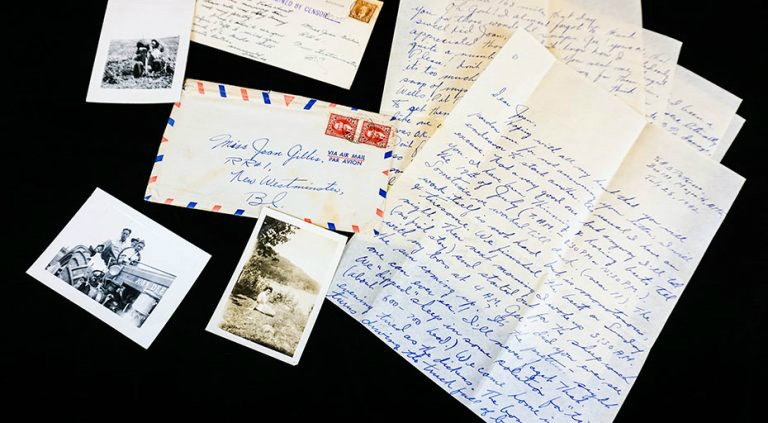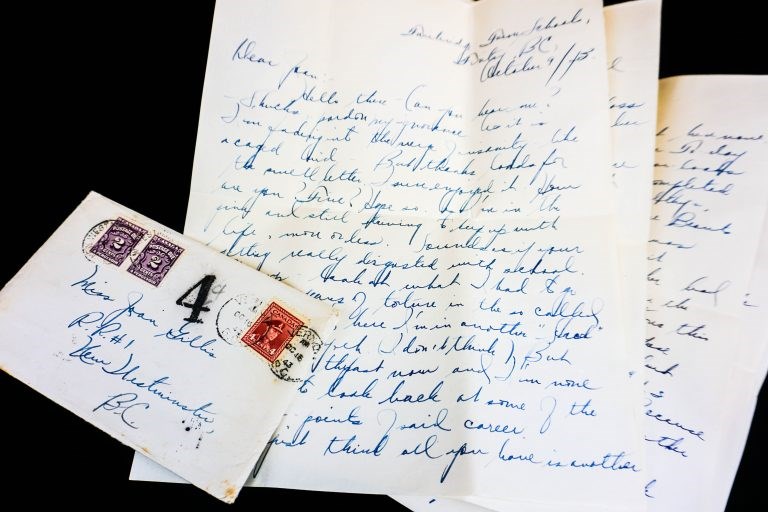 From upper left corner: photo of Yosh Nakamura (July 1942); postcard from Setsuko Fuji to Joan Gillis (May 17, 1943); letter from Yosh Nakamura to Joan Gillis (July 25 1942); photo of young woman, Setsuko Fuji; and photo of Yosh Nakamura, Jackie Takahashi and friend on a tractor. Photo UBC
From upper left corner: photo of Yosh Nakamura (July 1942); postcard from Setsuko Fuji to Joan Gillis (May 17, 1943); letter from Yosh Nakamura to Joan Gillis (July 25 1942); photo of young woman, Setsuko Fuji; and photo of Yosh Nakamura, Jackie Takahashi and friend on a tractor. Photo UBC
UBC Library has received 147 letters that provide insight into the devastating effects of the Japanese Canadian internment during World War II.
The letters were written by a group of young Japanese-Canadians between the ages of 13 and 18 that donor Joan Gillis met when she was attending Queen Elizabeth Secondary School in Surrey.
UBC history professor Henry Yu says the letters provide a window into the lives of young people going through a traumatic time in the province's history.
“Letters such as those sent to Ms. Gillis from school friends are so powerful precisely because of the authentic reality that they express of school children’s experience of the trauma, shared with a trusted friend," Yu says.
Shortly after Japan entered WWII the Canadian government forcibly removed over 23,000 Japanese Canadians from their homes and placed them in internment camps. Over 8,000 were temporarily housed at Hastings Park (Vancouver's Pacific National Exhibition grounds) before being sent to internment sites in the interior or work camps. The government then sold their property and possessions.
 Letter from Masao Ujiye to Joan Gillis, 9 October 1943. Photo UBC
Letter from Masao Ujiye to Joan Gillis, 9 October 1943. Photo UBC
Laura Ishiguro, an historian of Canada and the British Empire at UBC, says the letters will be an important teaching tool because "existing narratives around the internment tend to focus on Japanese Canadian people in isolation from others, or on the ideas and actions of major government figures, with the Japanese-Canadian community rendered largely faceless victims of tragedy.
"With these letters, my students and I could explore a different war-time history from the perspective of young people," Ishiguro says.
UBC Library adds the letters, which make up about 300-350 pages, to its Japanese Canadian Research Collection. The letters can be viewed in person by visiting Rare Book and Special Collections or by booking a tour.


